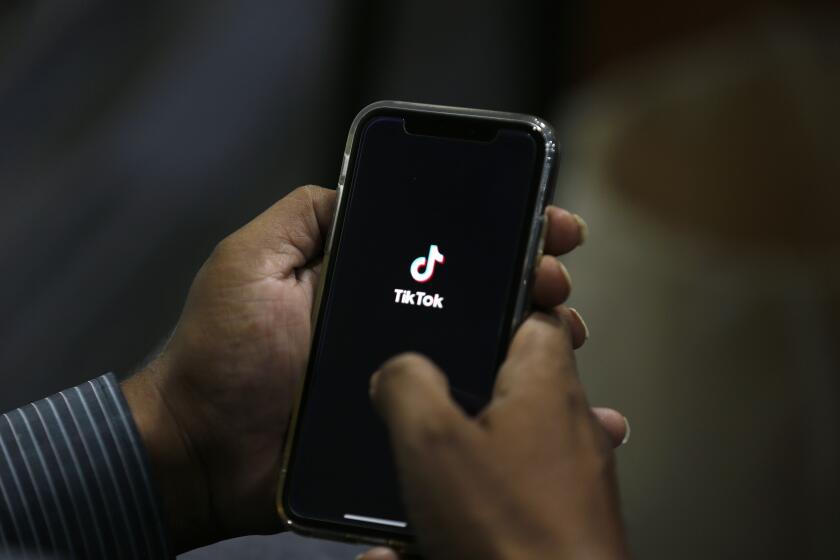Ready or Not, Connecticut Ushers In the End of Welfare
- Share via
WASHINGTON — At the stroke of midnight Friday, 325 Connecticut residents peered into the dimness of their futures and saw something that many find truly frightening.
For the first time, they’re looking at a future without welfare.
For these people, the first such group in the nation, the final bell has tolled. On Halloween night, they came to the end of the line in one of the nation’s boldest experiments in welfare reform: Connecticut’s 21-month lifetime limit for receiving benefits.
“This is really a test,” said Greg Duncan of Northwestern University’s Joint Center for Policy Research. “As a society, since the end of the Depression, we’ve guaranteed access to income support for needy families with children. And this is the first time we’re taking that back. It’s really extremely momentous.”
Indeed, a bold era that will soon unfold across the country has dawned first in this scenic New England state. Both proponents and foes of welfare reform are watching Connecticut closely to see if the feared consequences of cutoffs--homelessness, hunger, child abuse and neglect, interstate flight--will, in fact, materialize.
Connecticut’s experience already is providing important clues about the real-world impact of welfare reform: Faced with a rapidly approaching cutoff, more than half of affected recipients have gone to work. But given the option of continuing to receive benefits or “banking” them for an uncertain future, virtually all have chosen to let the clock run out. It’s a decision that could prove costly should they fall on hard times.
“How will I make it?” asked 25-year-old Jennifer Christiana, whose benefits are being cut off because the wages she receives at a discount drug store in Hartford push her family just above the federal poverty line.
“Any way that I possibly can.”
Christiana--by most standards the model of what Connecticut’s program hopes to achieve--used her final 21 months on welfare to build a $2,000 savings account while she worked her way onto the lowest rung of her store’s management ladder, where she earns $6.50 an hour. But her modest nest egg and her reserve of sick days and vacation time feel like a pretty flimsy safety net compared to the one she relied on for a total of six years.
“I have nothing to fall back on,” she said.
Federal Measure Changes Landscape
While most welfare experiments have been tried somewhere at some time, lifetime limits have never before been a feature of the national welfare landscape.
The landmark welfare reform law of 1996 changed all that. The federal measure told states that they must allow welfare recipients no more than 60 months of aid in their lifetimes, although they can exempt up to 20% of welfare families from the lifetime limit. States were permitted to set even shorter limits than five years, and 21 have chosen to do so.
Connecticut and Texas set the shortest limits: 21 months and 18 months, respectively. Because Texas started its clock ticking later, the wake-up call is ringing first in Connecticut.
“This really has not been tried on a large-scale basis,” said Joyce A. Thomas, the commissioner of Connecticut’s Department of Social Services. Thomas acknowledged that the state is taking a leap of faith, hoping that welfare recipients will use their time and their welfare checks wisely and never come back for more.
That is a faith that flies in the face of experience, which shows that roughly half of all adult welfare recipients, cycling on and off of the rolls, have accumulated more than five years of benefits. In fact, a recent study by Duncan and two other researchers concluded that roughly 41% of all those currently on welfare will run up against the federal limit of 60 months in eight years or less.
“The proof is in the pudding, and we will not know until our families have been off for some time,” Thomas said. “We just believe we are going to get good results from it.”
Officials Take Pride in Move to Jobs
Of the 902 Connecticut families who hit the 21-month limit on Friday, 577 are receiving six-month extensions, with strong admonitions to pull their lives together and prepare for the end of welfare in late April.
State officials point proudly to the extensions as evidence of their compassion. But they take greater pride in pointing to the circumstances of those residents who will be leaving welfare today. Of the 325 families whose cases are being closed, 274 are going off welfare because they are in jobs that have lifted them above the federal poverty level.
In principle, those 274 families have the right to apply for additional aid sometime in the future. But in practice, state officials say that once a case is closed, few returns will be granted. Thus, for as long as they live in Connecticut--whether mired in indigence or methodically climbing the economic ladder--they face little to no prospect of going back on the dole.
In the state’s first round of cutoffs, only 13 families are being booted off welfare despite having no apparent means of financial support. Officials say most would have gotten extensions if they had cooperated with caseworkers, who tried repeatedly to bring them back into compliance with state requirements. A state contractor will attempt to link those 13 families with community-based agencies and, if necessary, provide modest funds for food, clothing, shelter and emergency needs.
There Are No Guarantees
For this small fraction of Connecticut’s population, life without welfare may be highly problematic. But even among those leaving the welfare rolls with jobs or receiving temporary extensions, there are no guarantees.
Migdalia Carrion, a 33-year-old mother of three who left school in the ninth grade in her native Puerto Rico, is being dropped from the rolls because her $250-per-month child-support payment, plus wages from her part-time job as a stock clerk at a Windsor, Conn., department store, put her above the earnings limit. But she’s pretty sure her other income won’t cover her bills, even if she does reverse a spotty work history and hangs on to her current job long enough to command better pay.
Since first applying for public assistance in 1981, Carrion has done factory work, flipped hamburgers at McDonald’s and worked in a cafeteria. None of the jobs lasted more than seven months, and none paid better than minimum wage. Now in her eighth month at her current job, Carrion makes $5.57 per hour.
Carrion built up a financial reserve during the past 21 months, saving $800. But it went up in a puff of smoke when the transmission of her 1982 Nissan blew. She had to get it repaired so she could continue to drive to work.
To ready recipients for a lifetime of independence, Connecticut has embraced several of the major trends in welfare reform. Besides establishing a short lifetime limit, it requires recipients to find work within three months of starting benefits or be drawn into a rigorous job-search-and-counseling program. Failure to comply brings swift sanctions--including a benefit check reduced by as much as half.
Besides those sticks, the state is holding out an enticing carrot--an inducement to work known in welfare reform circles as an “earned-income disregard.” It allows a recipient to keep receiving the monthly benefit check--at $543 for a family of three, one of the nation’s more generous--in addition to his or her paycheck. If at the end of 21 months, that pay has raised the recipient above the national poverty level ($13,330 per year for a family of three), he or she will be taken off the rolls.
Connecticut officials hope welfare recipients will use the earned-income disregard to build up a financial reserve that can get them through tough times when they’re on their own.
“You let them have a soft landing instead of a cliff,” said Thomas, Connecticut’s welfare commissioner. “Ultimately, this is about choice and responsibility. We are working with adults, and it is up to them to think about their time limits and use the time wisely.”
Whether they will do so is open to question.
Connecticut officials say welfare caseworkers have regularly reminded recipients who find jobs that they should consider voluntarily forgoing their monthly benefits and “banking” their remaining eligibility for a possible rainy day. Rather than doing so, most have chosen to use up their time limits as if tomorrow would bring only financial sunshine.
‘I’m Scared,’ One Recipient Says
Miriam Williams, a 39-year-old mother of two in Danbury, Conn., has run up against her 21-month limit, but received a six-month extension. Currently earning about $215 per week as a part-time home-care worker, Williams said it was “a shock and a surprise” to discover she had reached the cutoff.
Now she thinks she had better look for another part-time job and start saving money. But first, she said, she has to pay back more than $800 in credit card debts she ran up on someone else’s card. And as for looking for another job--she also has flipped burgers, worked an assembly line and stocked store shelves since going on assistance in 1981--she doesn’t have a clue where to begin, and doesn’t plan to do so any time soon.
“I’m scared,” she said. “I don’t even wanna think about it till the day comes. I’m just gonna take it one day at a time.”
More to Read
Inside the business of entertainment
The Wide Shot brings you news, analysis and insights on everything from streaming wars to production — and what it all means for the future.
You may occasionally receive promotional content from the Los Angeles Times.











